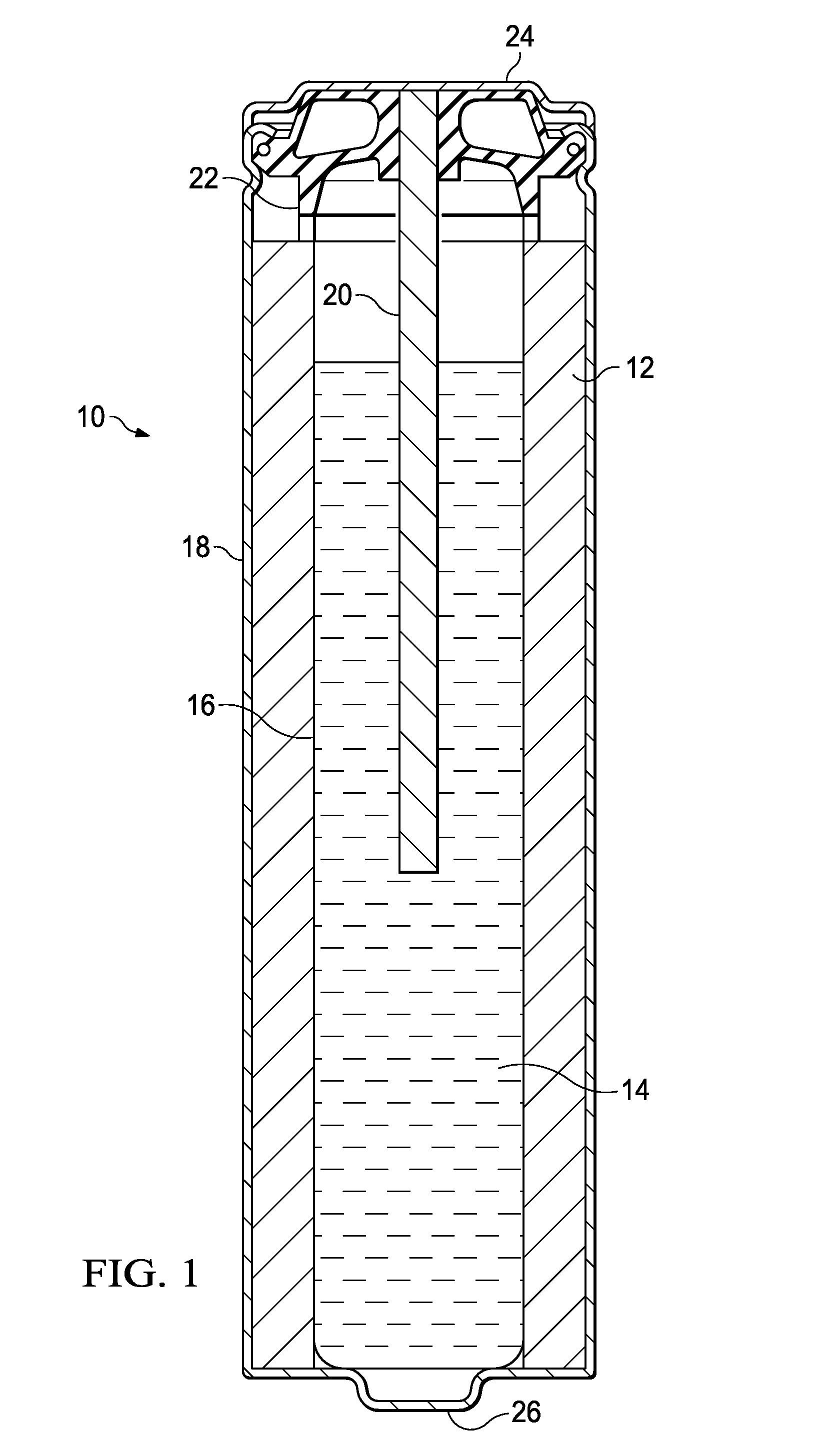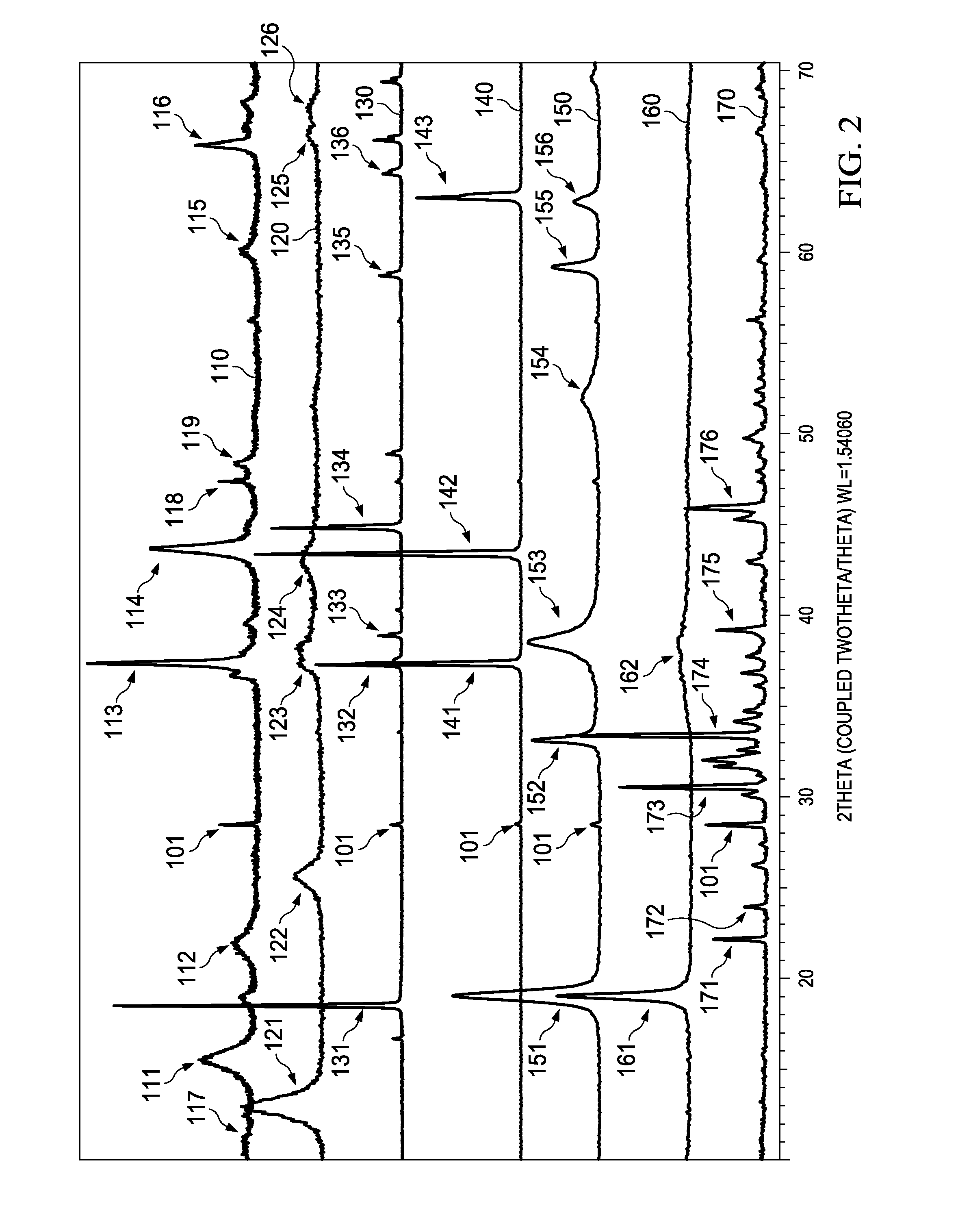Battery including beta-delithiated layered nickel oxide electrochemically active cathode material
a cathode material and electrochemically active technology, applied in the field of batteries, can solve the problems of device damage, device may not function at all, and the inability to increase the loading of electrochemically active materials alone to achieve better battery performan
- Summary
- Abstract
- Description
- Claims
- Application Information
AI Technical Summary
Benefits of technology
Problems solved by technology
Method used
Image
Examples
Embodiment Construction
[0012]Electrochemical cells, or batteries, may be primary or secondary. Primary batteries are meant to be discharged, e.g., to exhaustion, only once and then discarded. Primary batteries are described, for example, in David Linden, Handbook of Batteries (4th ed. 2011). Secondary batteries are intended to be recharged. Secondary batteries may be discharged and recharged many times, e.g., more than fifty times, a hundred times, or more. Secondary batteries are described, for example, in David Linden, Handbook of Batteries (4th ed. 2011). Accordingly, batteries may include various electrochemical couples and electrolyte combinations. Although the description and examples provided herein are generally directed towards primary alkaline electrochemical cells, or batteries, it should be appreciated that the invention applies to both primary and secondary batteries of aqueous, nonaqueous, ionic liquid, and solid state systems. Primary and secondary batteries of the aforementioned systems ar...
PUM
| Property | Measurement | Unit |
|---|---|---|
| open circuit voltage | aaaaa | aaaaa |
| 2θ | aaaaa | aaaaa |
| 2θ | aaaaa | aaaaa |
Abstract
Description
Claims
Application Information
 Login to View More
Login to View More - R&D
- Intellectual Property
- Life Sciences
- Materials
- Tech Scout
- Unparalleled Data Quality
- Higher Quality Content
- 60% Fewer Hallucinations
Browse by: Latest US Patents, China's latest patents, Technical Efficacy Thesaurus, Application Domain, Technology Topic, Popular Technical Reports.
© 2025 PatSnap. All rights reserved.Legal|Privacy policy|Modern Slavery Act Transparency Statement|Sitemap|About US| Contact US: help@patsnap.com



